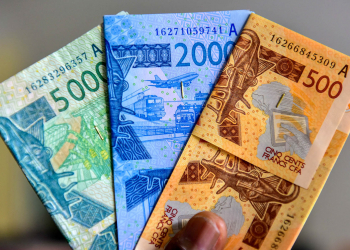Why Former Dep. Attorney General is wrong on AMERI
IMANI principals have been locked in a debate over the last week with the former Deputy Attorney General (“ex-DAG”) who led the Ghanaian side in the AMERI deal.
Our exchanges with the former Government functionary on Facebook in recent days have however brought us to the sudden realisation that the ex-DAG may be completely confused about certain fundamental aspects of the deal he led.
Aspects so fundamental and elementary as to suggest that he was either woefully let down by his VRA specialist advisors or he failed to heed to their counsel.
Since the best path forward for Ghana is to get him and the former Power Minister to testify on our side, enthusiastically and emphatically, in any mediation or arbitration, to the effect that Ghana was lied to by AMERI regarding the costing of the “balance of plant” work and the derivative calculations for the implied tariff, we are going to add to our list of goals for this our longstanding AMERI advocacy project.
Top of that new list is the need to find more elaborate means to “demonstrate” the deceits this country has endured at the hands of AMERI.
Firstly, let us address the two main defences of the AMERI deal being canvassed by the ex-DAG and his supporters.
1. He is still unwilling to back down from the position that there was some massive extra work done by AMERI on the GE-made TM2500+ power plant-complex supplied by PPL through Metka.
He believes that AMERI or its subcontractors paid $120 million in order to get the machines ready to start supplying power to the Ghanaian grid despite our very clear explanation of the scope of work using the contract annexes, the GE product manuals, and a bill of quantities approach. So let us try a more vivid approach.
A. There is no dispute that Ghana secured ten TM2500+ power plants from AMERI. This is confirmed in the contract.
B. The TM2500+ is a compact, “power plant in a box” and NOT just a gas turbine.
It is the gas turbine PLUS several components of the “electrical balance of plant” and “mechanical balance of plant”, mounted on four mobile trailers, needed to complete the “power plant in a box” concept of the TM2500+
(See: https://powergen.gepower.com/products/aeroderivative-gas-turbines/tm2500-gas-turbine-family.html).
C. The actual gas turbine inside the TM2500+ is the LM2500, a derivative of the CF6/Tf39 jet engines made by GE.
D. The LM2500 is sold on the open market for $9.5 million
(See: http://www.gas-turbines.com/trader/kwprice.htm).
E. Everyone knows that the TM2500+ is also sold on the open market for $22 million.
(See: http://www.pcsafrica.net/index.php/turbines-generators-for-sale/ge/ge-tm-2500-mobile-mw-dual2013-08-07-02-37-441343259910-detail).
F. That means that in addition to the gas turbine, there is at least $12.5 million of additional components added to the LM2500 in order to complete the TM2500+ package.
What exactly are these components that are even more expensive than the gas turbine itself?
G. The easiest way to answer that question is to take a good look at the attached breakdown prepared for the World Bank using the same Thermoflow and Gas Turbine World Handbook (GTW) data that IMANI has been using.
H. You would see clearly a “model cost structure” of a conventional, simple-cycle, aeroderivative power plant, such as the TM2500+ (the same type of machine that Ghana has procured in a set of ten). You will notice that the US-based cost of $22 million per plant is nearly perfectly approximated in this grounds-up model. You will see also that most of the other components and services needed to convert the LM2500 into a “powerplant in a box” (a la TM2500+) are included, including specialised manpower requirements, balance of plant, and critical auxiliaries.
I. What that simply shows is that AMERI didn’t do “foko”. Simple. Not if the cost per TM2500+ was in the $22 million retail price range.
If $22 million was indeed spent per plant, then we should have got virtually everything we needed to complement the gas turbines and deliver the full plant ready to dispatch peak power. The elementary piping and wiring done by AMERI could have hardly amounted to much in financial terms.
Frankly, if this new “demonstration” doesn’t clarify things for our investment law specialist ex-DAG, then we guess we are going to need divine intervention.
Let us turn to the more interesting part of his submissions, and the one that seemed to have received the most attention.
2. The ex-DAG accused IMANI of mis-schooling our audience into the belief that the AMERI deal is a simple “hire-purchase” rather than what he calls a “BOOT PPA”. “BOOT-PPA” being an abbreviation for “Build-Own-Operate-Transfer based Power Purchase Agreement”.
A. We can see where he is coming from, though we still find the relevance and essence quite muddled. A BOOT, however one dices it, is a kind of project finance structure that leads to a *purchase*. A PPA, evident from its name, is also a purchase arrangement. So we guess his main point is that we are not adequately describing the different stream of transactions taking place within the confines of the single deal; let’s unpack this stuff then.
B. Turn and toss it anyhow you wish, the ex-DAG is simply saying that at the same time that we are making installment payments for the power plants, we are also buying the electricity it produces, and thus any analysis worth its salt has to be two-pronged. Fine.
C. A hire-purchase of any commercial equipment is actually quite similar to the concepts the ex-DAG wishes to advert our minds to in his use of the “BOOT PPA” term. Perhaps, a more kosher phrase would be a “finance lease”.
There is nothing inherently complex about these kinds of transactions, all of which are characterised by an arrangement where a financier/lessor buys the item, rents it out for a period, at the end of which the residual value can be transferred to the lessee/borrower. It is plain vanilla stuff that is routinely used in the most basic of markets.
D. We can very smoothly, without any headache, decompose the two streams of activity going on in the AMERI deal and analyse the commercial terms.
E. The asset has a raw cost of about $200 million (more likely less) if purchased in bulk from the manufacturer or its authorised dealers, and the other capital costs of setup are minimal. A payment-by-installments approach over a period of five years at an 8% interest rate will bring the cost to about $280 million. A thoroughly standard transaction!
F. The costs of operations and maintenance/longterm-servicing now shifts to the rental/leasing side of the transaction, and enables us to enter a whole new area of analysis. This is the part of the deal where we are buying power from AMERI over the course of five years. We believe that this is where the ex-DAG has been finding justification for the bloated deal structuring costs.
G. His argument is no doubt that over the course of 5 years a rated output of 2200 gigawatt-hours of power shall be fed into our grid, and he has been questioning whether we at IMANI are sure that we are properly accounting for this volume of power as we would for any other power plant from which Ghana simply buys power without ever owning.
H. Here is where the ex-DAG always trips. He constantly refuses to understand that we need to compute these purchase transactions using “first principles” (or “sui generis” principles, as his profession would no doubt prefer to style it) since everything about the AMERI deal completely debunks his preference of treating it as a standard PPA, albeit one embedded in a BOOT structure.
There is nothing PPA-ish about AMERI! And that is because the ex-DAG and his team went out of their way to ensure that AMERI was not and is still not treated as a normal IPP!
I.
1. AMERI was not compelled to spend millions of dollars in legal and consulting fees acquiring regulatory approvals.
2. AMERI was not required to spend money leasing land and securing title.
3. AMERI was not required to get tariff approval from the PURC in the standard manner and length of time.
4. AMERI was not required to sign an interconnection agreement with the Electricity Transmission Utility.
5. AMERI’s quasi-PPA provisions violate critical elements of the Ghanaian Energy Commission’s and the World Bank’s model PPA agreements.
In these circumstances, it would be rather bizarre to insist on simply applying standard Internal Rate of Return benchmarks to the AMERI case. Frankly, it would be embarrassingly weak thinking.
J. A first-principles analysis of the rental context of AMERI’s sale of power to Ghana starts from looking at standard Operations and Maintenance (O&M) costs in relation to simple-cycle, aeroderivative gas turbine, power plants in order to compute the total costs to Ghana of just buying the power produced in the AMERI plants WITHIN THE SPECIFIC DESIGN OF THIS DEAL.
K. First thing our good friend, the ex-DAG, needs to bear in mind is that fuel costs account for over 80% of the O&M costs of simple-cycle plants like ours with a relatively low thermal efficiency (effective level of about 38%).
L. Using the heat-rate spec of the LM2500, we can easily estimate the BTU/Kwh parameter and compute the amount of fuel needed to power the plant for a year when operating at its full load factor. If you do that one gets about $75 million.
If a 60% availability or utilization rate is applied, due to the fuel regime, high maintenance schedule, fuel-switching risks, etc. we get $45 million in fuel costs per annum. The non-fuel O&M costs then come to about $8 million by simple conversion, and by considering the lower fixed O&M cost component.
In practice, the real cost is significantly lower because AMERI cleverly shifted some components of the balance of plant to Ghana’s cost, thus displacing the related O&M costs. Let’s peg AMERI’s O&M costs at $6 million a year then.
M. The figure for AMERI’s running/variable costs of delivering power from the plant we are paying for through the separate transaction described earlier then comes to $30 million over five years. Forget the present value calculations for now. What would be a fair markup for the operator here? 30%? Let’s say then that in the absence of the ex-DAG’s beautiful “BOOT-PPA” our power purchase costs would have been $40 million over the term of the deal.
N. Note that this state of affairs arises because AMERI saddled Ghana with the fuel costs. We have not considered the tax-free regime AMERI enjoys in computing other ameliorating factors. In fact we are going to go forward and add another $40 million contingency factor, just for the heck of it.
What then would the financial obligations of Ghana in the two-prong evaluation method preferred by the ex-DAG come to?
This would be it:
$40M + $280M + $40M = $360M
You should see the magical resurfacing of the missing figure of $150 Million IMANI has been campaigning about all this while! (I.e. $510M fixed costs under the deal less/minus the $360M shown above).
O. So once again we have gone round and round and round, at the prodding of the ex-DAG, only to come full-circle to where we have always been: $150 Million can’t be accounted for in this deal!
Now, there is another pernicious cover story interfering with the ability of some observers to appreciate the weird nature of the AMERI deal.
Perhaps our investment law guru ex-DAG has fallen prey to it too as he mentioned the phrase at some point in the course of this debate to support the notion that AMERI’s “PPA” with Ghana is ordinary and unremarkable.
That cover story derives from the use of standard PPA terminology, which we have amply explained as being poorly suited to this AMERI context. The cover story turns around this phrase: “Capacity Charge”. But can the $8.5 million we pay monthly to AMERI be treated as a simple “capacity charge” in Ghana’s context?
3. AMERI is unlike virtually every other power plant deal in this country.
Thus, the decision by the ex-DAG and some others to uncritically call the $8.5 million fixed monthly payment a “capacity charge” stems from a fundamental misapprehension.
Capacity charges are computed on the composite basis of plant availability and grid demand.
The idea is to compensate plant operators who produce at their maximum contracted output only to find that there is no demand for the power and that reserve tariffs/reactive power compensation is also inadequate or nonexistent at all.
For such unfortunate plant operators, a capacity charge kicks in to mitigate any undeserving commercial losses
In Ghana this fear of oversupply is rarely a problem so capacity charges and energy charges tend to blend into the bulk generation charge.
In the case of AMERI, however, what we have is a fixed charge, irrespective of plant availability since scheduled maintenance has been liberally exempted from the utilisation calculations and fuel supply and other facility risks have been removed from AMERI’s burden and transferred to the power buyer, Ghana.
It is this same muddled misapprehension of basic elements in the structure of the deal that has led the ex-DAG to interpret the variable Energy Charge in the contract capped at $16.6 million per annum as a “wear and tear” margin.
When has “wear and tear” ever been separated from O&M costs, when it has already been factored into the project financing; then smuggled into a separate price-gouging scheme; and, finally, slapped on top of the already extortionate tariff price buildup? A pricing scheme that overall shall see us paying AMERI three times what the average plant in Ghana receives for power?
As we have said many times before, we do acknowledge that the prospects of Ghana prevailing in a mediation or arbitration in a fair and just effort to recoup some of the monies being paid monthly to AMERI do significantly depend on the cooperation of the former Power Minister and the ex-DAG.
For that reason alone, we shall remain open-minded about engaging in any exercises that can bridge the differences between us and them. God give us stamina.
Comments:
This article has no comments yet, be the first to comment
Join GhanaStar.com to receive daily email alerts of breaking news in Ghana. GhanaStar.com is your source for all Ghana News. Get the latest Ghana news, breaking news, sports, politics, entertainment and more about Ghana, Africa and beyond.




